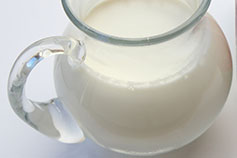
Whole Milk
Whole milk is least adulterated and is very much similar to the way it comes from cow or other dairy farm animals. It is intact and the components like fat and water are not removed. It contains 3.4% fat and 87% water in addition to proteins and enzymes, vitamins and minerals, and carbohydrates.
The flavor of fresh milk is balanced and mild. The lactose in the milk makes it sweet and the minerals make it slightly salty and very slightly acidic. Its mild and pleasant aroma is due short-chain fatty acids that keep the highly saturated milk fat fluid at room temperature, and the short-chain fatty acids reach our nose when evaporated.
The basic flavor of milk is affected by the animals’ feed and microbial activity in the cow’s rumen (first part of stomach). Pasteurization also slightly modifies the fresh flavor of milk. Flavor of milk deteriorates due to oxidation by contact with oxygen or exposure to strong light.
Milk is a rich source of many essential body-building nutrients, particularly proteins, sugars, and fat, vitamin A and B vitamins, and calcium. It is always safe to buy milk with USDA Organic seal to make sure that the dairy farm animal is not treated with drugs including growth hormones. The animals are allowed to gaze and fed organic fodder.
The flavor of fresh milk is balanced and mild. The lactose in the milk makes it sweet and the minerals make it slightly salty and very slightly acidic. Its mild and pleasant aroma is due short-chain fatty acids that keep the highly saturated milk fat fluid at room temperature, and the short-chain fatty acids reach our nose when evaporated.
The basic flavor of milk is affected by the animals’ feed and microbial activity in the cow’s rumen (first part of stomach). Pasteurization also slightly modifies the fresh flavor of milk. Flavor of milk deteriorates due to oxidation by contact with oxygen or exposure to strong light.
Milk is a rich source of many essential body-building nutrients, particularly proteins, sugars, and fat, vitamin A and B vitamins, and calcium. It is always safe to buy milk with USDA Organic seal to make sure that the dairy farm animal is not treated with drugs including growth hormones. The animals are allowed to gaze and fed organic fodder.
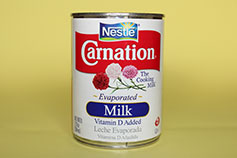
Evaporated Milk
Humans learned to consume other animals’ milk when they started domesticating the animals for meat and skins. It was discovered later that the domestic animals can be used for getting milk too. (Humans started drinking other animals’ milk sometime between 9000 - 8000 BC.)
Gradually, humans discovered that milk can be transformed into different forms, such as butter, yogurt, and cheese. Later, they became more skilled and started collecting greater quantities of milk and found new ways to concentrate and preserve its nourishment. The milk that we use for cooking, including evaporated milk, serves primarily as a source of moisture, and adds flavor and body to the food
The canned evaporated milk is made by removing 60% of water from fresh milk. The milk is then homogenized, canned, and sterilized. The canned evaporated milk is concentrated, creamy, and pale in color and has a longer shelf life.
You can make your own evaporated milk at home. Here are the steps:
Since the evaporated milk is unsweetened, it can be added to provide thickness and creaminess to sweet as well as savory dishes.
You can find canned evaporated milk at any grocery store or buy online at amazon.com.
It’s a common practice to put the can in a pot of boiling water or a warm oven and let it brown inside, which is potentially dangerous. Since any trapped air in the can will expand on heating and may cause the can to burst open. It’s safer to empty the can into an open utensil and then heat it on the stovetop, in the oven, or in the microwave.
Gradually, humans discovered that milk can be transformed into different forms, such as butter, yogurt, and cheese. Later, they became more skilled and started collecting greater quantities of milk and found new ways to concentrate and preserve its nourishment. The milk that we use for cooking, including evaporated milk, serves primarily as a source of moisture, and adds flavor and body to the food
The canned evaporated milk is made by removing 60% of water from fresh milk. The milk is then homogenized, canned, and sterilized. The canned evaporated milk is concentrated, creamy, and pale in color and has a longer shelf life.
You can make your own evaporated milk at home. Here are the steps:
- In a heavy-bottomed pan, bring the desired quantity of milk to a simmer over medium heat (keep stirring to prevent it from burning)
- Bring the heat down to medium-low, and let the milk simmer for about 60 minutes until the quantity of milk reduces to about half of the original quantity, for example a quarter gallon or 32 ounce milk should reduce to 13 ounces. In this process, make sure to keep stirring the milk frequently to prevent it from burning.
Since the evaporated milk is unsweetened, it can be added to provide thickness and creaminess to sweet as well as savory dishes.
You can find canned evaporated milk at any grocery store or buy online at amazon.com.
It’s a common practice to put the can in a pot of boiling water or a warm oven and let it brown inside, which is potentially dangerous. Since any trapped air in the can will expand on heating and may cause the can to burst open. It’s safer to empty the can into an open utensil and then heat it on the stovetop, in the oven, or in the microwave.

Almonds
Coming Soon...
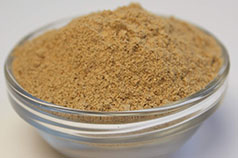
Cardamom Powder or crushed seeds
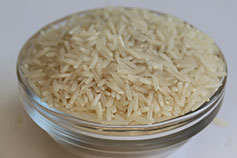
White Basmati Rice
Rice is one of the oldest cereal grown and is consumed by a large part of world’s population. There are around 40,000 varieties of rice known; however, it is broadly classified as long-grain, medium-grain, and short-grain.
Long-grain rice is four to five times longer than it is wide. Because of its low starch content, the grains remain separated and fluffy when cooked. This is best used for making fried rice, pulao and biryanis (popular rice dishes in South Asian and Middle Eastern countries), burritos and tacos, and as a side dish to complement stews and curried vegetables and meat dishes. It is also used for making desserts like rice pudding. Common varieties are usually labeled as Basmati, Jasmine, Carolina, and Texmati.
Medium-grain rice is two to three times longer than it is wide. It is moist and moderately sticky when cooked. It is used to make stir-fry recipes. Some people like their rice a little sticky and use medium-grain rice as side dish with stews and curried vegetable and meat dishes. It can also be used making desserts like rice pudding (kheer). Common varieties are Bomba, Carnaroli, Arborio, Vialone, Valencia or Thai sticky rice.
Short-grain rice is slightly longer than it is wide. It is chewy and sticky when cooked and is most popular in Japanese cuisine; especially for making sushi. Short-grain rice is usually labeled as Japanese Sushi Rice or Short Grain White or Short Grain Brown .
Most varieties of rice are sold as either white or brown. White rice used to be the favorite choice for eating; however, brown rice is becoming popular lately for its health benefits. Both white and brown rice have same calorie content. The main difference depends upon the way rice is milled.
Brown rice is un-milled; only outer inedible husk is removed. Therefore, it retains the whole seed, which is bran, germ, and endosperm. The whole seed of rice is the main source of nutrients, antioxidants, and fiber; hence brown rice is more nutritious. Brown rice takes longer to cook and has nutty taste.
White rice is milled to remove its bran and germ away. Removing the bran and germ makes the white rice less nutritious as about 25% of grain’s proteins and several nutrients are lost. White rice cooks faster and has relatively sweet taste.
For cooking rice, the standard rice to water ratio is 1:2, however, this ratio vary with cooking methods. Rice can be cooked in a pan, pressure cooker, rice cooker, or microwave, and each appliance requires different quantity of water and takes different time to cook.
The above methods needs to be followed for cooking rice with water for using as side dish or making fried rice, pulao or biryanis (rice dishes popular in South Asian and Middle Eastern countries); the dishes in which rice grains need to be fluffy and non sticky. However, rice can be cooked in different ways for making desserts such as rice pudding, in which rice is slowly cooked with milk and nuts.
If you are shopping for rice for the first time, try to find the rice of your choice at your grocery store or supermarket. If you cannot find one, you will find a wide range of rice varieties in Indian or South Asian grocery stores. It is also available at online grocery stores such as amazon.com. In the search field, type the kind of rice you want to buy and then sort by relevance. For example, type ‘long-grain basmati rice in grocery’ if you want to buy long-grain basmati rice.
Long-grain rice is four to five times longer than it is wide. Because of its low starch content, the grains remain separated and fluffy when cooked. This is best used for making fried rice, pulao and biryanis (popular rice dishes in South Asian and Middle Eastern countries), burritos and tacos, and as a side dish to complement stews and curried vegetables and meat dishes. It is also used for making desserts like rice pudding. Common varieties are usually labeled as Basmati, Jasmine, Carolina, and Texmati.
Medium-grain rice is two to three times longer than it is wide. It is moist and moderately sticky when cooked. It is used to make stir-fry recipes. Some people like their rice a little sticky and use medium-grain rice as side dish with stews and curried vegetable and meat dishes. It can also be used making desserts like rice pudding (kheer). Common varieties are Bomba, Carnaroli, Arborio, Vialone, Valencia or Thai sticky rice.
Short-grain rice is slightly longer than it is wide. It is chewy and sticky when cooked and is most popular in Japanese cuisine; especially for making sushi. Short-grain rice is usually labeled as Japanese Sushi Rice or Short Grain White or Short Grain Brown .
Most varieties of rice are sold as either white or brown. White rice used to be the favorite choice for eating; however, brown rice is becoming popular lately for its health benefits. Both white and brown rice have same calorie content. The main difference depends upon the way rice is milled.
Brown rice is un-milled; only outer inedible husk is removed. Therefore, it retains the whole seed, which is bran, germ, and endosperm. The whole seed of rice is the main source of nutrients, antioxidants, and fiber; hence brown rice is more nutritious. Brown rice takes longer to cook and has nutty taste.
White rice is milled to remove its bran and germ away. Removing the bran and germ makes the white rice less nutritious as about 25% of grain’s proteins and several nutrients are lost. White rice cooks faster and has relatively sweet taste.
For cooking rice, the standard rice to water ratio is 1:2, however, this ratio vary with cooking methods. Rice can be cooked in a pan, pressure cooker, rice cooker, or microwave, and each appliance requires different quantity of water and takes different time to cook.
- To cook 1 cup white basmati rice in a pan, add 2 cups of water (2 times the rice). Once the water comes to a boil on high heat, lower the heat and tightly cover the pan. It will take about 15 minutes to cook on low heat.
- To cook 1 cup white basmati rice in a pressure cooker, add 1 and 1/4 cups of water (just 1/4 cup more water than rice). The rice is cooked on 3 whistles on high heat. Remove the cooker from stove, and let the pressure inside the cooker release by itself before opening the lid. This is the fastest and my favorite method of cooking vegetable pulao.
- To cook 1 cup white basmati rice in a rice cooker, add 2 cups of water (2 times the rice). It takes about 30 minutes to cook.
- For cooking in microwave, follow your microwave specific instructions. Usually, to cook 1 cup white basmati rice, 3 cups of water (3 times the rice) is needed. It takes about 10 minutes to cook on high with rice uncovered and 15 minutes on medium/medium-low with rice uncovered.
The above methods needs to be followed for cooking rice with water for using as side dish or making fried rice, pulao or biryanis (rice dishes popular in South Asian and Middle Eastern countries); the dishes in which rice grains need to be fluffy and non sticky. However, rice can be cooked in different ways for making desserts such as rice pudding, in which rice is slowly cooked with milk and nuts.
If you are shopping for rice for the first time, try to find the rice of your choice at your grocery store or supermarket. If you cannot find one, you will find a wide range of rice varieties in Indian or South Asian grocery stores. It is also available at online grocery stores such as amazon.com. In the search field, type the kind of rice you want to buy and then sort by relevance. For example, type ‘long-grain basmati rice in grocery’ if you want to buy long-grain basmati rice.

Sugar
Coming Soon...
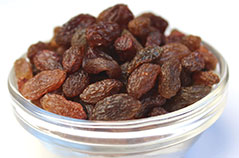
Raisins
Coming Soon...
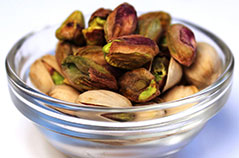
Pistachios
Coming Soon...
Share your thoughts and questions!


